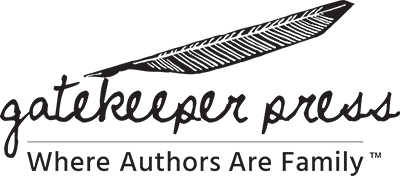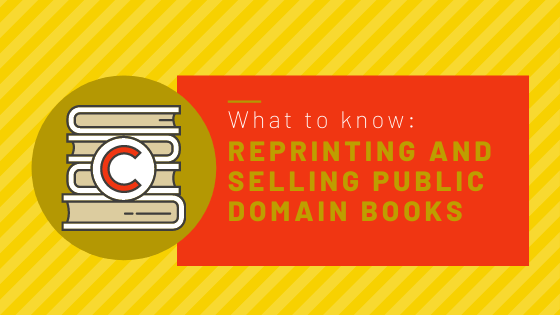In recent years, the ideas of repurposing vintage materials—think recycled barn wood or vintage clothing—and reinventing or rebranding ourselves have taken root. Indeed, the terms “repurpose” and “rebrand” are now firmly embedded in modern-day lexicon. After all, maximizing an item’s use or discovering a new career path is about finding renewed purpose.
As an author, consider public domain publishing a new avenue to explore, a rebranding of sorts. Publishing public domain books offer an opportunity to recycle or repurpose existing works, such as the classics, while adding a new dimension to your writing career.
That’s right—an author can benefit financially from publishing public domain books, or those books with expired copyrights. Learn how to profit from public domain publishing by repurposing those works that are legally up for grabs.
How Does Public Domain Work?
Once a book is copyrighted, its contents, or the intellectual property, is protected by law until 70 years after the death of the author. After this point in time, the book—in most cases, with some exceptions—becomes fair game. This means that any part or all of the book’s content is legally available to be published by anyone who desires to do so. Any book published prior to 1923 is available, as these works are automatically considered within the public domain. Further, about 90% of books published between 1923-1964 are also public domain because the copyright holders failed to extend their copyrights.
There are several ways an author can repurpose a work that is no longer off-limits. In fact, writers are limited only by their imaginations as to the possibilities of publishing public domain books. Some repurposing ideas to consider include:
- Creating a new book cover
- Adding illustrations to a book that previously had none
- Creating an audiobook
- Creating an eBook
- Publishing direct quotes from the book
- Writing a screenplay based on the book
- Creating supplemental worksheets or materials for the book
- Translating the book into other languages
- Simplifying the wording of the book
- Creating a children’s book from the storyline and/or characters
- Modernizing the story and/or characters
There are limitless ideas for novel ways to reprint public domain books.
Where to Find Public Domain Books to Reprint
When undertaking this new venture of selling public domain books, you may be wondering how to determine which books have expired copyrights. After all, you surely don’t want to go to the expense of having a book translated or hiring an artist to create illustrations for a book only to learn that it is still under copyright protection.
The first step in determining if a book is public domain is to simply read its copyright page. As noted above, all books published prior to 1923 are automatically public domain and most books dated 1932-1964. If you want further assurance, the best way to learn whether a book is public domain is through the U.S. Copyright Office. There you can undertake a database search for the title to confirm its copyright status.
How to Publish Public Domain Books
By now, you may be wondering, “How can I reprint public domain books?” You want to know how to navigate the nuts and bolts of the process, right?
- Say you happened upon a cool, old pre-1923 book at an antique store and create an eBook version. You would first need to scan its contents using an optical character recognition technology and create a PDF file. Using a smartphone converter app, you can then convert the PDF to an EPUB file. The EPUB file is what is uploaded to the publishing platform. Alternately, some websites will already have the PDF of the classic book available, which can then be downloaded, converted, and formatted to the EPUB file.
- Create a copyright page for your version of the book. This identifies you as the creator of the unique edition by including your name and the new date of publication. If you’ve redesigned the book cover or added artwork, any artistic contributions should be recognized on the copyright page.
- Adhere to the specific requirements regarding selling public domain books. Amazon, for example, requires that one of the following criteria be present:
- Provide 10 or more illustrations to the book
- Create a unique translation of the book
- Include unique annotations, such as study guides, a detailed biography, historical context, or a literary critique
- Authors are required to include one of these terms (Illustrated, Annotated, or Translated) in the title field. They must include a summary, in bullet point form at the beginning of the product details, showing how the book is differentiated from the original work.
- Once your EPUB file formatting is completed, you will need to establish an account on the publisher platform. Formatting must be done correctly or else the eBook will not upload correctly. Enter the book details, the cover art, any illustrations in JPEG or TIFF format, other required information such as categories and keywords, upload the EPUB file, set a price, and submit the book for publication.
Note that Amazon will not accept the title if there is already a free version of the public domain book on its Kindle platform.
Can You Profit from Public Domain?
The whole purpose of repurposing previously copyrighted material is to earn additional income. When selling public domain books, you can indeed create a steady stream of passive income, as long as you have made an effort to create a quality product that provides value to the customer. If you have decided to just change the book cover, then be sure that your cover art is compelling. For sure, a fresh new cover can attract renewed interest in a once forgotten old classic.
Understand that profits will not be calculated according to the same royalty scale as an originally authored eBook or print-on-demand book. Each publishing platform has its royalty program for publishing public domain books, which is typically lower than the royalty paid for original content. In most cases, royalties paid in this category range from 20%-35%.
For example, an author of a public domain eBook might receive 35 cents on a $.99 eBook sale. While this doesn’t seem like much reward for your efforts, there are ways to create a fairly lucrative side hustle with some hard work and a little imagination. Brainstorm ways to improve an existing version of a classic, either by changing the cover design, simplifying or modernizing the content, adding relevant artwork, having it translated into another language, or creating a complementary audiobook. Now scale this effort, and increase income by adding several public domain classic books in your library.
Find Out More About How to Republish and What Comes After
Public domain publishing offers an exciting new pathway for authors to explore. To go as smoothly as possible, you will need the guidance of publishing pros to help with formatting the EPUB files, designing amazing cover art, or creating illustrations for your version of the public domain book. Put Gatekeeper Press in your corner to maximize your profits. Contact us today!

